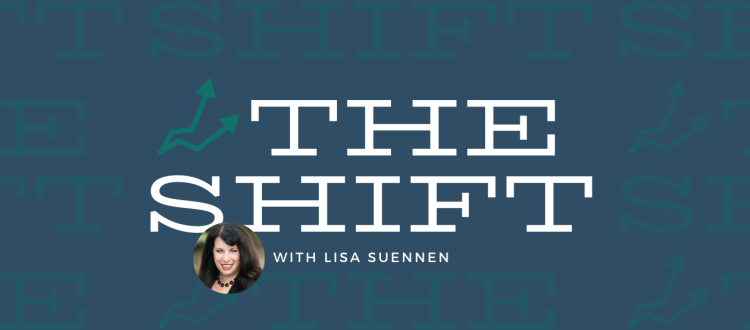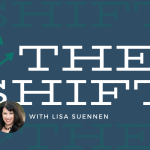Evidation: Finding Tailwinds For Pharma Companies, and Individual Patients

Lisa Suennen
Sailors know the concept of tacking. It’s an essential way of moving forward. Without tacking, the headwinds are too strong. The boat can go wildly off track, or stall. By steering from one direction to the other, in zigs and zags, it is possible to drive into the headwinds and make progress. Do it well, and you can gradually overtake an opposing force to reach the destination.
San Mateo, Calif.-based Evidation Health, Inc. has a long history of tacking, and it’s now maneuvered itself into position to perfectly match what the market wants. This is the well-known state of “product-market fit.” And when a company reaches this stage, the tailwinds begin to take over, helping push it even faster to the planned destination of market success.
Founded originally in 2012, the predecessor company to Evidation was called The Activity Exchange (TAE). TAE was founded early in the days of the digital health revolution, long before paths to health data monetization were clear. The company originally took data from consumer wearables and applied sophisticated predictive analytics to encourage wellness and drive patient behavior, particularly for employers and insurance companies.
In many ways, that was the right product, but it entered the market at the wrong time. It was simply much too early for customers that were just beginning to think about the role that digital data might play in encouraging better health outcomes. As such, Evidation put its boat in the water at the precise moment that the oncoming wind was strongest.
When TAE merged with the newly formed Evidation in 2014, the company made its first tack. It shifted to help the emerging digital health companies demonstrate the value and validity of their products and interventions for pharma companies, payers, and other clients.
By helping digital upstarts develop an evidence base, they posited, all boats would rise. As it turned out, the digital health startups of that period didn’t have the funds to undertake the kind of sophisticated demonstrations of efficacy that Evidation sought to manage on their behalf for that demanding set of customers – pharmaceutical companies and health insurers.
Many digital health companies of the time hit the rocks. But Evidation noticed something that led it to tack again — that the pharmaceutical companies were coming up the learning curve in digital health. They had both money and interest to invest in understanding patients’ experience when taking medications.
In response, Evidation redirected its efforts toward becoming a digital products Clinical Research Organization (CRO) of sorts. Evidation found a new angle, helping pharmaceutical companies sort through the burgeoning array of digital products to evaluate their validity and usefulness. With Evidation’s help, pharma companies, through a series of short post-market studies, began to see a more vivid and detailed picture of patient’s everyday lives as they interacted with newly marketed biopharmaceuticals.
Suddenly, Evidation was in position to provide pharmaceutical companies with new information that could help them with their sales and marketing campaigns.
Each of these tacks was complex. That’s not just because of the business shifts required, but because there was uncertainty among leadership and, at times, a lack of unanimity on the Board as to whether the pharma market was really the right course to pursue.
At the time Evidation made this move, the idea of real-world evidence (RWE) was gaining currency in the pharma/biotech realm, especially as it related to Phase IV post-marketing surveillance studies of new drugs.But the market sent out some mixed signals that would, on occasion, tug the company back toward its wellness roots.
But Evidation fundamentally stayed on course. As it picked up steam, it began to recognize that its pharma insights business, as designed, wasn’t going to get them all the way to their target destination.
Instead, the Evidation team was encountering more wind than waves, and that was keeping the business from growing to its full potential. Most of the pharma contracts were for short studies (3 month “catch and release studies” as Evidation internally referred to them) that did not produce a recurring revenue model or an ongoing relationship with customers and patients. Notably, pharma and biotech companies were also becoming far more curious and sophisticated about how data and data science could inform their business at a much more profound level.
It was time to tack again.
Ultimately, the business set its course toward gathering and analyzing patient insights over extended periods of time (not just for short bursts), developing large condition-specific cohorts drawn from its proprietary patient network (the company has built a patient network of over 4.5 million individuals willing to participate in studies for minimal compensation). This has enabled pharmaceutical companies to engage in continual and continuous learning about patient experience through longitudinal engagement with large target populations.
Evidation’s many large and mid-sized pharmaceutical and biotech clients can now continue to develop new queries and hypotheses to test and identify emerging trends over the course of a year or more to get a more holistic picture of what it’s like for people to live with various medical conditions and to take medications over the long term. At the same time, companies can satisfy patients’ hunger for education about how to best care for themselves by sharing information and personalized content, as well as relevant and individualized data with cohort participants.

Christine Lemke, co-founder and co-CEO, Evidation
It’s early going on this course, but the coordinates appear to be correct. As Co-Founder and Co-CEO Christine Lemke noted, “It’s fascinating to see how many use cases come out of the woodwork as you watch the population for longer periods. Trends over time are profound and many could not have been anticipated.”
Evidation and its biopharma clients have been experimenting, for example, with large cohorts of patients who opted in to allow programs to track possible signs of emerging illness. By monitoring certain vital signs, it has been possible to see subtle fluctuations that could portend signs of flu or COVID-19. When identified, the patients are engaged to take tests for both conditions, an action they deeply appreciate. Interestingly, this may send Evidation heading full circle to its original customer roots as the company identifies ways of predicting and preventing illness.
For now, Evidation is running with the pharma sector.
With its many zigs and zags, the big learning for Evidation has been importance of staying nimble, noting it’s much harder to tack with 300 team members than 30.
“Being ahead of the market is hard and being first is not always best,” Lemke says. “Sharks survive because they keep moving. We realized along the way that we were never going to have perfect info or judgment, so we must always watch how the wind is blowing and just keep going.”





